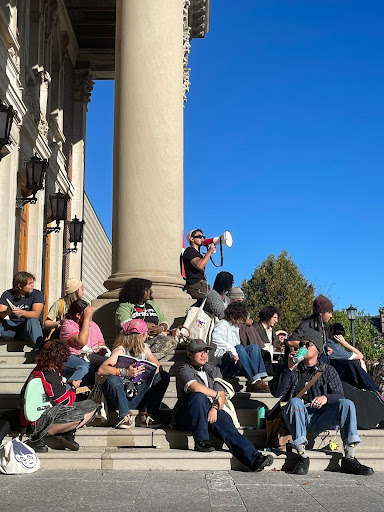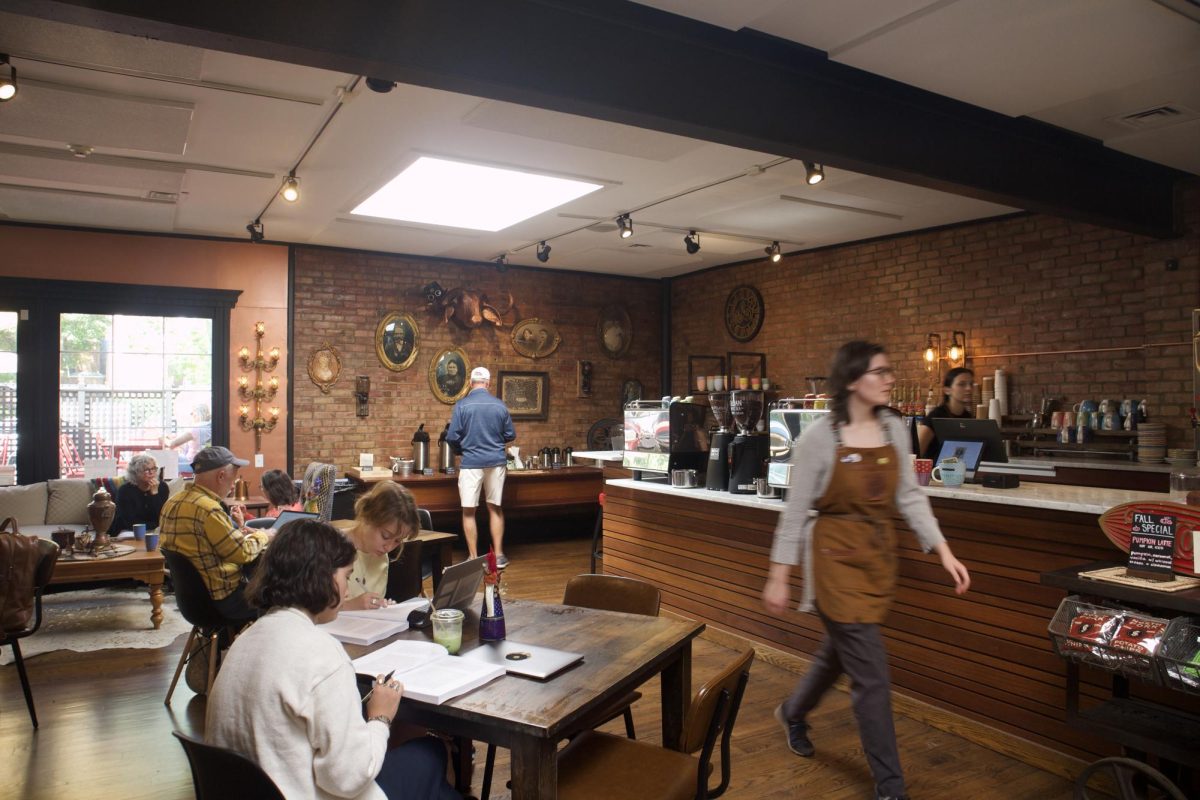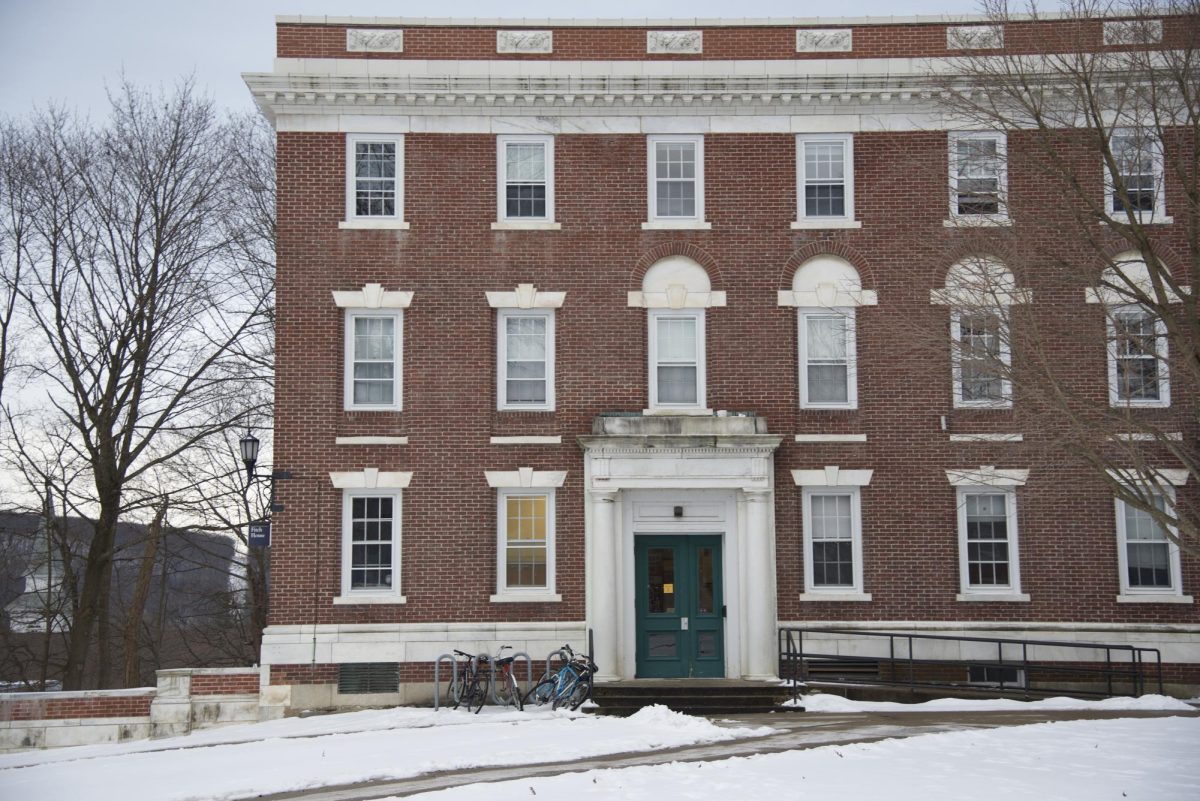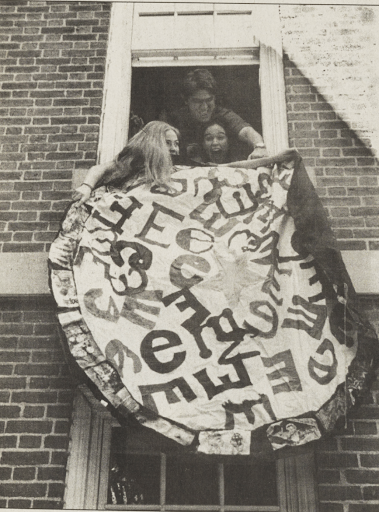
Twenty-two students broke out their carabiners and dog-eared gender theory books last Friday at the College’s own “Performative Masc Competition.” With a crowd watching outside Chapin Hall, these participants vied for a chance to win an 11-piece matcha set and — more importantly — to determine who best fit the internet stereotype of the “performative masc.”
What is a performative masc? “Being a performative masc is about performativity and presenting yourself in a way that is disingenuous and takes a lot of fashion and culture from queer communities, particularly lesbians, and using that to attract women,” Abel Jagne ’28, one of the event’s organizers, said in an interview with the Record. Over the last few months, the phrase “performative male” has gained traction on social media and is now being used in a more casual context.
Co-organizers Jagne, Michelle Ametekpor ’27, and Gabby Brown ’27 said that they drew inspiration from “performative male” contests conducted at several other institutions, including the University of North Carolina, William & Mary, and Yale. “We were hanging out one night and Michelle just brought up, ‘We should have a performative masc competition … and I was like ‘I agree. We should. That’s popular on college campuses right now,’” Jagne recalled.
The contest differed from some of those held on other campuses. The organizers said that they presented the contest as a performative “masc” competition, as opposed to a performative “male” competition, to foster gender inclusivity. “We didn’t want it to just be focused on men,” Jagne said. “[Michelle] and I are both very queer and not cis. We wanted to make something that was all-inclusive, especially since the performative male aesthetic is heavily based on queerness.”
Part of the hilarity of the competition stems from its basis in truth for the participants. “Performative” statements or outfits were often genuine interests in feminist literature or bona fide ownership of a carabiner. “It was really satisfying to see that the winner was just very authentic with their masculinity and someone who was just being very genuine about the things they did or the hobbies they had or the talents they could do,” Jagne said.
Elise Dzialo ’27, who placed third, said that they intended to poke fun at the premise of the competition. “You were supposed to put on a character, but I sort of just went into the competition and was like, ‘How visibly gay can I make myself?’” they said. “Because these are already clothes I own, this is already what I wear everyday. These are already the books I read. So it was more of a kind of joke about myself than anything else.”
The diversity of the participants was validating for the finalists. “I think that was my favorite part about it … that we all look so different,” said Esther Eboh ’27, who placed second. Eboh appreciated the competition’s pushback against “the idea that the ‘performative masc’ is super skinny, super white.”
“I think the three of us up there, even though we were doing this ‘performative masc’ bit, every answer we gave was a part of who we were,” she continued. “And I think that’s what gets the best and biggest reaction from the people. Because it’s real, you know? I appreciated the most that … these identities can look different. It felt affirming to me.”
Ametekpor and Brown explained that people of color, especially queer people of color, paved the way for the culture on which the concept of a “performative masc” is based. “I was in one of my [Women’s, Gender, and Sexuality Studies] classes, and they were like ‘What’s a performative man?’ And everyone was saying performative men are white,” Ametekpor said. “We were assigning it whiteness, but I know so many Black performative men who dress like lesbians.”
“One of our contestants was asked to pick a song that defined women, and he picked ‘More Than a Woman’ by Aaliyah, and then the crowd was silent,” Brown said. The 2001 song was released after the passing of Black artist Aaliyah, who was known as the “Princess of R&B.” “I was like, that’s very anti-Black because if we think about indie music today and who that was influenced by, the soft voices — Aaliyah is the embodiment of that,” he continued.
“Aaliyah is what your favorite indie person’s favorite indie person’s favorite indie person was doing,” Ametekpor added. “Like Aaliyah was mother… It was very telling about who gets silenced and even what people think is underground and popular. What’s underground and popular was Black first.”
Adelio Lechuga-Kanapilly ’27, who placed first in the competition, seconded Brown and Ametekpor’s arguments about inclusivity. “I agree that it is often people of color and Black people, especially their culture and their aesthetics, who paved the way for a lot of these things,” Lechuga-Kanapilly said. “And it kind of sucks that the idea of the ‘performative male aesthetic’ is often given to white guys.”
Contestants noted that the competition offered them a space to be their authentic selves, and to express aspects of their identity that they do not feel as comfortable doing outside of the College. “I’m from New York City, which is a very progressive city,” Dzialo said. “And there’s lots of queer people in New York City and queer-accepting people in New York City, but it’s still a huge city and I’ll experience harassment or people will either read me as a lesbian or a little boy.”
“There’s something about Williams where I can just, for the most part, feel good about my gender expression,” they continued. “I don’t have to worry about it, so it felt really nice to get on stage and make a joke out of it. It’s nice to be around my friends and laugh about stuff like that.”
The competition also served to build community at the College. “People have been coming up to different people who organized it and thanking us genuinely, or saying it was so fun and they want to work together to throw new [events],” Brown said. “I think I underestimated the impact that a performative masc competition has…. Even contestants were coming up to us, shaking our hands being like, ‘Oh this is so fun, thank you for the break, or for the community.’”
“It was such a small thing that can have such a large impact,” she continued. “That was crazy to me.”
More events are in the works, according to the competition’s co-organizers. “After this event I’d be totally open to trying to plan things or organize something in a similar fashion,” Jagne said. “I’m personally really interested in creating more spaces where all queer folk, regardless of their background, can engage and interact with each other in fun ways.”








